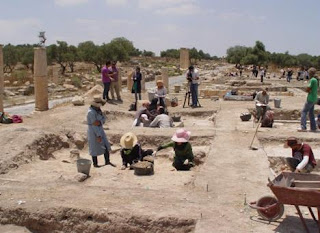Archaeological
excavations in Gadara
(modern Umm Qais) have exposed a
“first of its kind” Hellenistic temple in the region. As discussed in an
earlier blog (see: Pella
and Gadara, two more settlements for Alexander’s veterans), Gadara
emerged in the wake of Alexander the
Great, together with Pella
and Gerasa,
and shares most of their history. Gadara
was coveted by both the Ptolemies and the Seleucids, who
captured and recaptured it time and again, confirming the role it played on the
trade routes with the east.
Pottery shards
will have to narrow down the construction date of the temple, but so far, it has
been revealed that it was built in the Ionic order. The ground plan has enabled recognizing the pronaos, a podium, and a naos, the holiest part. As so often, the
building has been reused later on by the Romans, Byzantines, and Muslims.
In the center of
Gadara,
a network of water tunnels has also been discovered, consisting of several Hellenistic wells and Roman tunnels that led to one of the central Baths.
It is always a
great pleasure to hear that new buildings and artifacts will be added to the
already existing rich remains of this once so proud city.

No comments:
Post a Comment